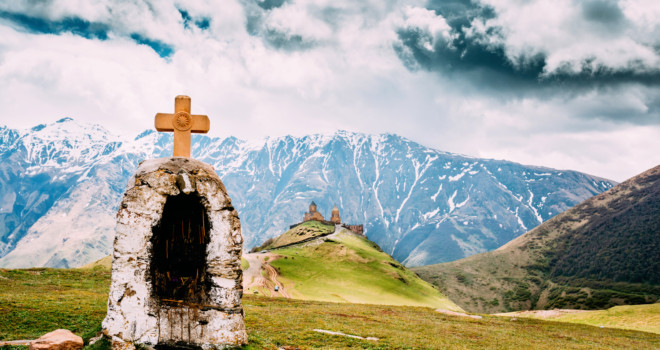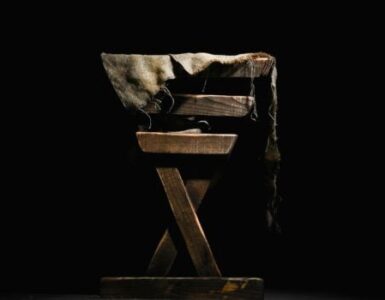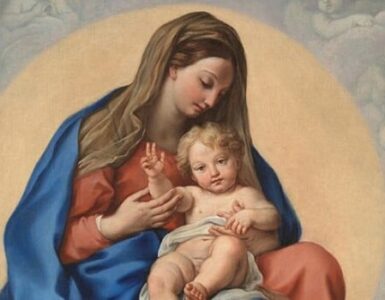The medieval era, we are told, was defined by suspicion and antagonism towards the natural, material world. “In medieval Christian doctrine,” observes academic and author Joel Kotkin in his new book The Coming of Neo-Feudalism, “the world we grasp with our senses is ephemeral, while the spiritual world is more real…. The emphasis on a future life over the present world diminished the passionate commitment of the res publica and family.” For this claim, Kotkin cites Edward Gibbons’ The Decline and Fall of the Roman Empire, a pivotal, if anti-Christian eighteenth-century history, many of whose theses have since been proven erroneous.
Such is certainly the case with Gibbons’ and Kotkin’s claim regarding the supposed anti-nature worldview of the medievals. St. Thomas Aquinas (1225-1274), making recourse to Aristotle, declared that “intellectual knowledge is caused by the senses” (Summa Theologiae I.84.6). As Aquinas extrapolates throughout the Summa and his other writings, the material world is good, and we gain much of our knowledge of truth, and even of God, by considering the natural order.
St. Francis of Assisi (1181-1226), whose feast day the Church recently celebrated, also had a high view of nature, evidenced in his “Canticle of the Creatures” and “Canticle of the Sun,” that thank and praise God for all of creation. “Praise the Lord for our Mother Earth, who sustains us and keeps us, and brings forth the grass and all the fruits and flowers of every color.” G.K. Chesterton in his biography of St. Francis, commenting on this love of creation explains: “Man has stripped from his soul the last rag of nature worship, and can return to nature.”
Moreover, both St. Francis and the Dominicans, the order to which St. Thomas belonged, were vehement critics of the dualistic Albigensian heresy, which taught that the material world, and even the human body, were evil. The Nativity scene, which St. Francis created and popularized, affirmed that the human body, inhabited by God Himself in the Incarnation, signaled divine approbation of its goodness. The Domicans in turn vigorously preached against Albigensianism.
Medieval Catholic affirmation of the goodness of nature was not only for doctrinal purposes. Contemplation of nature also served as a means for the Christian to direct his mind and heart to the eternal, as Franciscan monk St. Bonaventure (1221-1274) explains in his Itinerarium Mentis in Deum (tr. Into God), of which Regis J. Armstrong, OFM, Cap. has recently published a new, annotated translation. It is an excellent resource to introduce a less familiar Church Doctor.
The “rungs of a ladder of light” directing us to God “begin with creatures and lead all the way to God to whom no one rightly embarks except through the Crucified,” explains Bonaventure in the Prologue. Moreover, this spiritual ascent is for the “man of desires,” who with prayer that originates with “anguish of heart” and a sharpened mind, orients his natural yearnings toward the divine. Affirming creatures and human desire doesn’t sound like a repudiation of nature.
One of Bonaventure’s favorite metaphors is that of the mirror. He describes the “whole perceptive world” as a “mirror through which we may pass over to God, the supreme Artisan.” Creation is a mirror of the divine because “from the greatness and appearance of created beings, their Creator will knowingly be able to be seen.” Everything in the universe owes its existence to the First Cause, to cite Aquinas, and thus reflects, albeit imperfectly, His beauty, truth and goodness. “The highest power, wisdom, and goodwill of the Creator shines in created objects,” declares Bonaventure.
With autumn upon us, there are ample opportunities to perceive God in the created order. There is certainly the radiant colors emanating from the leaves of the trees, which, as they fall and decay, produce an abundance of nostalgic, musky-sweet odors. Yet this in turn reminds us that we, unlike our creator, who is “purely spiritual, incorruptible, and unchangeable,” are finite, fragile, and perishable. When we gather around the autumn campfire to drink our Oktoberfest and cider, we perceive in the flames “the sweep of the power, wisdom, and goodness of the triune God who, by His power, presence, and essence, exists in all things without being limited.”
The diversity of creation likewise elicits awe and praise. There is in nature a “unique diversity in material, shape or structure, and vigor beyond all human calculation,” which manifests the power, wisdom, and goodness of God. Is it not the remarkable diversity of fall foliage in its many shades and hues that is so arresting to the eye? Nature preaches the beauty of God in its “medley of lights, patterns, and colors, in simple, mixed, and even complex bodies.” The oak, ash, maple, black walnut, hickory, birch and beech light up the land in my native Commonwealth of Virginia. When I am prepared to hear their sermon, it always inspires to worship.
Equally stirring is the activity of nature: “manifold in what is natural, in what is craftsmanship, in what is noble— displays by its bountiful variety the vastness of that strength, craft, and goodness.” In the late summer, mourning doves established a nest in a tree in our front yard (a Yoshino cherry). Our family watched in wonder as the birds built their little home, laid their eggs, perched in guarded care for them, and nursed the hatchlings. Then, one day in late September, the baby doves took flight, perhaps never to return. How many similar little feats of creation occur, unnoticed, right under our noses, because we are too busy or distracted to care?
The natural world is designed, asserts Bonaventure, which “implies the primacy, sublimity, and dignity of the First Beginning.” The elusive red fox that trots confidently through the woods or the red-tail hawk that dominates the tree-tops with its screech certainly evoke a sort of dignity. When we seek out and rightly interpret these traits of nature, we can trace them back to the “first and the highest, the most powerful, the wisest and the best.”
The Medieval church was no opponent or critic of the natural world or human body. Rather, it celebrated both, and, per Bonaventure, creation was an important means to communion with the divine. “Whoever fails to be dazzled by such radiance of created things is blind; to be awakened by such loud outcries is deaf; to praise God for all of these displays is mute; to turn toward the First Beginning from such great signs is stupid,” declares Bonaventure. Creation is good because it originates from and is sustained by our Lord. “And God saw everything that he had made, and behold, it was very good” (Genesis 1:31). St. Bonaventure is only getting started: his meditations on nature in Into God is only the first rung of his ladder to the divine.
✠













